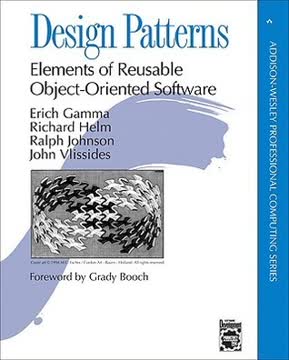Key Takeaways
1. Design Patterns: Reusable Solutions to Common Problems
Design patterns capture solutions that have developed and evolved over time.
Capturing Design Expertise. Design patterns are not just theoretical concepts; they are practical solutions that have emerged from real-world software development experiences. They represent proven techniques for addressing recurring design challenges in object-oriented systems.
Four Essential Elements:
- Pattern Name: A handle for easy reference and communication.
- Problem: Describes when to apply the pattern.
- Solution: Describes the elements, relationships, and responsibilities.
- Consequences: Discusses the trade-offs and results of applying the pattern.
Benefits of Using Design Patterns. By leveraging design patterns, developers can avoid reinventing the wheel and instead build upon established, well-understood solutions. This leads to more flexible, elegant, and reusable object-oriented designs.
2. Creational Patterns: Abstracting Object Instantiation
Creational patterns concern the process of object creation.
Decoupling Object Creation. Creational patterns provide mechanisms to decouple the client code from the concrete classes being instantiated. This abstraction allows for greater flexibility in object creation, composition, and representation.
Class vs. Object Scope:
- Class creational patterns use inheritance to vary the class that's instantiated.
- Object creational patterns delegate instantiation to another object.
Key Creational Patterns: Abstract Factory, Builder, Factory Method, Prototype, and Singleton. These patterns offer different approaches to managing object creation, each with its own set of trade-offs and benefits.
3. Structural Patterns: Composing Classes and Objects
Structural patterns deal with the composition of classes or objects.
Building Complex Structures. Structural patterns focus on how classes and objects can be combined to form larger, more complex structures. These patterns address issues of composition, interface adaptation, and efficient object sharing.
Class vs. Object Scope:
- Class structural patterns use inheritance to compose interfaces or implementations.
- Object structural patterns use object composition to realize new functionality.
Key Structural Patterns: Adapter, Bridge, Composite, Decorator, Facade, Flyweight, and Proxy. These patterns provide solutions for creating flexible and maintainable object structures.
4. Behavioral Patterns: Defining Object Interaction and Responsibility
Behavioral patterns characterize the ways in which classes or objects interact and distribute responsibility.
Governing Object Communication. Behavioral patterns are concerned with algorithms and the assignment of responsibilities between objects. They describe not just patterns of objects or classes but also the patterns of communication between them.
Class vs. Object Scope:
- Class behavioral patterns use inheritance to distribute behavior between classes.
- Object behavioral patterns use object composition rather than inheritance.
Key Behavioral Patterns: Chain of Responsibility, Command, Interpreter, Iterator, Mediator, Memento, Observer, State, Strategy, Template Method, and Visitor. These patterns offer solutions for managing complex control flow and object interactions.
5. The Composite Pattern: Representing Part-Whole Hierarchies
Composite lets clients treat individual objects and compositions of objects uniformly.
Recursive Composition. The Composite pattern enables the creation of hierarchical structures by composing objects into tree-like arrangements. This allows clients to treat individual objects and compositions of objects uniformly.
Key Elements:
- Component: Defines the interface for objects in the composition.
- Leaf: Represents leaf objects in the composition (no children).
- Composite: Defines behavior for components having children and stores child components.
Benefits: Simplifies client code, makes it easier to add new component types, and defines class hierarchies consisting of primitive objects and composite objects.
6. The Strategy Pattern: Encapsulating Algorithms for Flexibility
Strategy lets the algorithm vary independently from clients that use it.
Algorithm Encapsulation. The Strategy pattern encapsulates different algorithms within separate classes, making them interchangeable. This allows the algorithm to vary independently from the clients that use it.
Key Elements:
- Strategy: Declares an interface common to all supported algorithms.
- ConcreteStrategy: Implements the algorithm using the Strategy interface.
- Context: Is configured with a ConcreteStrategy object and maintains a reference to it.
Benefits: Provides an alternative to subclassing, eliminates conditional statements, and offers a choice of implementations.
7. The Observer Pattern: Establishing Dependencies for Automatic Updates
Define a one-to-many dependency between objects so that when one object changes state, all its dependents are notified and updated automatically.
Publish-Subscribe Mechanism. The Observer pattern defines a one-to-many dependency between objects, where a subject notifies its observers of any changes in its state. This allows for automatic updates and maintains consistency between related objects.
Key Elements:
- Subject: Knows its observers and provides an interface for attaching and detaching them.
- Observer: Defines an updating interface for objects that should be notified of changes in a subject.
- ConcreteSubject: Stores state of interest to ConcreteObserver objects and sends a notification to its observers when its state changes.
- ConcreteObserver: Maintains a reference to a ConcreteSubject object, stores state that should stay consistent with the subject's, and implements the Observer updating interface.
Benefits: Abstract coupling between Subject and Observer, support for broadcast communication, and the ability to vary subjects and observers independently.
8. The Power of Loose Coupling and Abstraction
Program to an interface, not an implementation.
Reducing Dependencies. Loose coupling and abstraction are recurring themes throughout the design patterns. By minimizing dependencies between classes and programming to interfaces rather than concrete implementations, systems become more flexible, reusable, and maintainable.
Benefits of Loose Coupling:
- Increased reusability of classes in isolation.
- Easier to learn, port, modify, and extend a system.
- Reduced risk of cascading changes when one class is modified.
Techniques for Achieving Loose Coupling: Abstract coupling, layering, and encapsulating the concept that varies. These techniques are applied in various design patterns to promote loosely coupled systems.
9. Selecting and Applying Design Patterns Effectively
A design pattern should only be applied when the flexibility it affords is actually needed.
Context-Specific Application. Design patterns should not be applied indiscriminately. They are tools to be used when the specific problem they address arises. Applying a pattern without a clear understanding of its benefits and liabilities can lead to unnecessary complexity and reduced performance.
Approaches to Finding the Right Pattern:
- Consider how design patterns solve design problems.
- Scan Intent sections.
- Study how patterns interrelate.
- Study patterns of like purpose.
- Examine a cause of redesign.
- Consider what should be variable in your design.
Step-by-Step Approach to Applying a Design Pattern: Read the pattern, study the structure, look at the sample code, choose meaningful names, define the classes, define application-specific names for operations, and implement the operations.
10. Design Patterns as a Common Language and Learning Tool
Design patterns provide a common vocabulary for designers to use to communicate, document, and explore design alternatives.
Enhancing Communication. Design patterns provide a shared vocabulary for discussing and documenting software designs. This allows developers to communicate more effectively and understand existing systems more easily.
Improving Design Skills. Learning design patterns can accelerate the development of expertise in object-oriented design. They provide solutions to common problems and guide designers in making informed decisions.
Complementing Existing Methods. Design patterns are not a replacement for design methods but rather a valuable adjunct. They provide a way to describe more of the "why" of a design and not just record the results of your decisions.
Last updated:
FAQ
1. What is Design Patterns: Elements of Reusable Object-Oriented Software by Erich Gamma about?
- Comprehensive design pattern catalog: The book systematically names, explains, and motivates 23 general design patterns that address recurring problems in object-oriented software development.
- Focus on object-oriented design: It emphasizes how to use objects, inheritance, and polymorphism to create flexible, reusable, and maintainable software architectures.
- Reusable solutions: Patterns are presented as proven, general arrangements of classes and objects that can be customized to solve specific design problems in various contexts.
- Practical examples and case studies: The book includes real-world examples and a case study (Lexi editor) to illustrate how patterns are applied in practice.
2. Why should I read Design Patterns by Erich Gamma and others?
- Shared design vocabulary: The book provides a common language for software designers, making it easier to communicate, document, and discuss complex system designs.
- Expert knowledge transfer: It captures and distills expert design experience, helping both novices and experienced programmers improve their design skills more rapidly.
- Facilitates software reuse and refactoring: The patterns guide the creation of reusable software components and serve as targets for refactoring, supporting software evolution.
- Widely acclaimed resource: The book is praised for its clarity, practical value, and lasting impact on the field of software engineering.
3. What are the key takeaways from Design Patterns: Elements of Reusable Object-Oriented Software?
- Patterns as reusable solutions: Design patterns provide elegant, time-tested solutions to common design problems, promoting code reuse and flexibility.
- Three main pattern categories: Patterns are organized into Creational, Structural, and Behavioral types, each addressing different aspects of software design.
- Design for change: The book emphasizes designing systems that are easy to extend and maintain by encapsulating variability and reducing coupling.
- Principles over recipes: Rather than offering rigid templates, the book teaches principles and trade-offs, encouraging thoughtful application of patterns.
4. What are design patterns according to Design Patterns by Erich Gamma et al.?
- Definition and purpose: A design pattern describes a recurring problem in a context and the core of its solution, enabling repeated use without duplication.
- Four essential elements: Each pattern includes a name, a problem description, a solution outline (abstract, not concrete), and consequences (trade-offs and results).
- Capturing design experience: Patterns distill key aspects of successful designs, including class roles, collaborations, and responsibilities, to facilitate reusable object-oriented design.
5. How are design patterns organized in Design Patterns: Elements of Reusable Object-Oriented Software?
- Three main categories: Patterns are classified as Creational (object creation), Structural (class/object composition), and Behavioral (object communication).
- Class vs. object scope: Patterns are further distinguished by whether they apply to classes (static, compile-time) or objects (dynamic, run-time).
- Interrelated catalog: The book provides cross-references and diagrams to show how patterns relate, combine, or serve as alternatives to each other.
6. What are the main Creational, Structural, and Behavioral patterns in Design Patterns by Erich Gamma?
- Creational patterns: Abstract Factory, Builder, Factory Method, Prototype, and Singleton focus on object creation mechanisms.
- Structural patterns: Adapter, Bridge, Composite, Decorator, Facade, Flyweight, and Proxy address class and object composition.
- Behavioral patterns: Chain of Responsibility, Command, Interpreter, Iterator, Mediator, Memento, Observer, State, Strategy, Template Method, and Visitor focus on communication and responsibility among objects.
- Purpose of categories: Each category addresses a different set of recurring design challenges in object-oriented software.
7. What is the principle of "program to an interface, not an implementation" in Design Patterns by Erich Gamma?
- Interface over implementation: Clients should depend on abstract interfaces (often defined by abstract classes) rather than concrete implementations to maximize flexibility.
- Enables polymorphism: This principle allows objects of different classes to be used interchangeably if they share the same interface.
- Supports decoupling: It reduces dependencies between components, making systems easier to extend and modify.
- Creational pattern support: Patterns like Abstract Factory and Factory Method help instantiate objects without binding clients to specific classes.
8. How do inheritance and composition differ as reuse mechanisms in Design Patterns by Erich Gamma?
- Inheritance (white-box reuse): Shares implementation via subclassing but exposes subclass to parent class internals, which can break encapsulation and limit flexibility.
- Composition (black-box reuse): Assembles objects dynamically through well-defined interfaces, preserving encapsulation and allowing behavior to vary at run-time.
- Design recommendation: The book advocates favoring object composition over class inheritance to keep designs flexible, focused, and reusable.
- Pattern examples: Many patterns, such as Decorator and Strategy, leverage composition for greater adaptability.
9. How does delegation work in Design Patterns: Elements of Reusable Object-Oriented Software and which patterns use it?
- Delegation concept: An object handles a request by delegating it to another object, similar to how subclasses defer to parent classes in inheritance.
- Enables dynamic behavior: Delegation allows for dynamic composition of behavior at run-time, increasing flexibility.
- Pattern usage: Key patterns using delegation include State, Strategy, Visitor, Mediator, Chain of Responsibility, and Bridge.
- Benefits: Delegation supports encapsulation and makes it easier to change or extend object behavior without modifying existing code.
10. How does Design Patterns by Erich Gamma illustrate the use of patterns in a real application?
- Lexi case study: The book presents Lexi, a WYSIWYG document editor, as a comprehensive example of pattern application.
- Multiple patterns in action: Patterns such as Composite, Strategy, Decorator, Abstract Factory, Bridge, Command, Iterator, and Visitor are used to solve practical design problems.
- Demonstrates pattern interaction: The case study shows how patterns can be combined and interact within a complex system.
- Learning by example: This real-world scenario helps readers understand the practical value and implementation of design patterns.
11. What are some key Structural patterns in Design Patterns by Erich Gamma, and how do they work?
- Decorator: Adds responsibilities to objects dynamically by wrapping them, avoiding subclass explosion and enabling flexible feature combinations.
- Facade: Provides a unified, simplified interface to a complex subsystem, reducing dependencies and making systems easier to use.
- Flyweight: Shares fine-grained objects efficiently by separating intrinsic (shared) and extrinsic (context-dependent) state, reducing memory usage.
- Proxy: Acts as a surrogate or placeholder for another object, controlling access, deferring creation, or adding functionality transparently.
12. How do Behavioral patterns like Observer, State, and Visitor function in Design Patterns by Erich Gamma?
- Observer: Establishes a one-to-many dependency so that when one object changes state, all its dependents are notified and updated automatically, promoting loose coupling.
- State: Encapsulates state-specific behavior in separate objects, allowing an object to change its behavior when its internal state changes, and replacing complex conditionals.
- Visitor: Separates operations from object structure, enabling new operations to be added without modifying element classes, using double dispatch for flexibility.
- Pattern trade-offs: These patterns simplify communication, state management, and operation extension, but may introduce complexity or make adding new element types harder.
Review Summary
Design Patterns is widely regarded as a seminal work in software engineering, introducing the concept of design patterns to improve code reusability and maintainability. While some readers find it dry and outdated, many praise its comprehensive catalog of patterns and their applications. The book is considered essential reading for object-oriented programmers, offering valuable insights into solving common design problems. Critics note that some patterns may be less relevant in modern languages, but the overall principles remain important. The book's impact on software development practices is widely acknowledged.
Similar Books

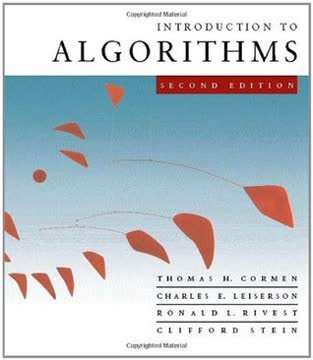
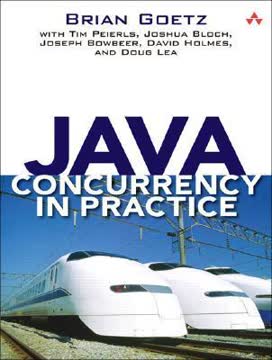





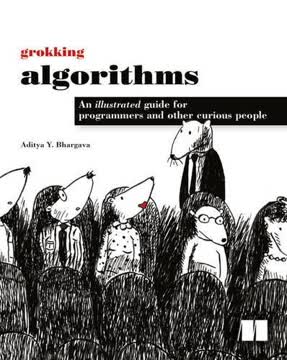
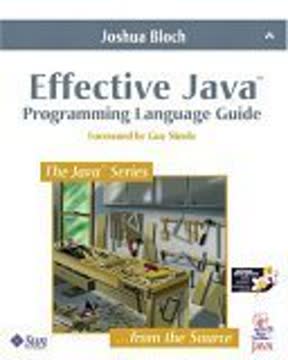
Download PDF
Download EPUB
.epub digital book format is ideal for reading ebooks on phones, tablets, and e-readers.
